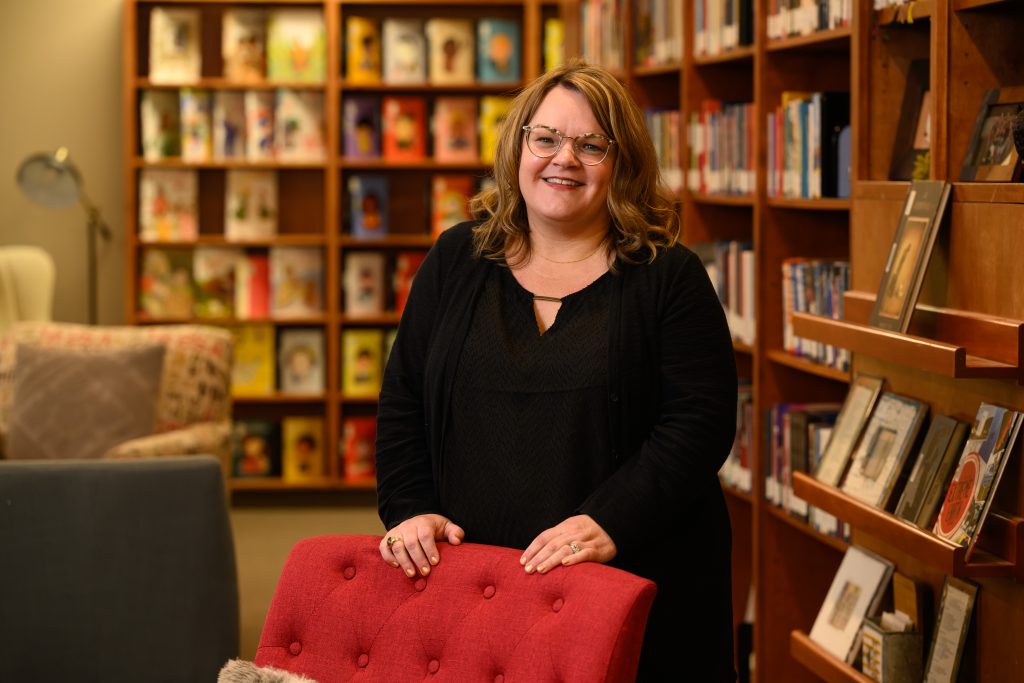By Andrea Stark Bishop, PhD

Like many people my age, my grandfather fought in World War II. An Oklahoma boy with a gift for growing things and fixing things, Grandpa Stark joined the 66th infantry division, which was sent to support soldiers at the Battle of the Bulge. On Christmas Eve, 1944, he boarded the USS Leopoldville for Cherbourg, France. He later wrote about his experiences, and his story was published in local media.
If you’ve never read about the USS Leopoldville, I encourage you to spend time learning about this fascinating page pulled from the World War II history books. According to historical records, on that fateful Christmas Eve, 763 soldiers were killed and another 493 were never
recovered when a German submarine torpedoed the ship carrying my grandpa. When the torpedo struck at 1800 hours, a young William Stark was on deck duty, shivering in his thin uniform and wishing for the warmth of the shared heat of those below in the troop compartments. One moment was calm; the next was chaos.
The explosion instantly killed hundreds in those troop compartments below him. Others survived the blast but were thrown into the icy waters and drowned. Yet my grandfather’s position up on deck — call it luck or fate or miracle — spared his life when 1,256 other lives were lost.
The stories of so many men ended that day, either by torpedo or by the freezing waters they fell into, but my grandfather lived and survived two more years of action. Only days after that horrible Christmas Eve, he found himself greeting the new year of 1945 on French soil, working his way towards Belgium and in the thick of battle. He lived through atrocities yet still found joy. He saw the worst of humanity but still believed that good overcomes evil.
My grandparents taught me the value of resiliency. They taught me that hard things happen to good people, and that our responses to those events create the people we are. They taught me that choosing joy is really the only choice. They taught me the pleasure of growing
something with my own hands, of sitting on the porch on a hot summer night and sharing stories. They taught me that wealth is sharing eggs from their chickens and the vegetables from their gardens with anyone in need. They taught me that sometimes we are the ones who go into the water, and sometimes we are given deck duty.
A good narrative helps us connect, offers background and history, and engages the emotions and attention of an audience in powerful ways. I learned storytelling sitting at the feet of my grandparents and parents, and I’ve been mentored by other excellent storytellers.
Chip and Dan Heath, authors of Made to Stick, identify some ideas as “sticky” if they stick in our memories. They write that sticky ideas are simple, unexpected, concrete, credible, emotional stories. If a good story is sticky, it is one that we remember, but it is also one that we find credible and useful. As leaders, we need to practice the art of communicating our ideas and visions through intentional and “sticky” narratives.
One of my mentors and good friends, Dr. Nathan Mellor, is an incredible storyteller with a gift of capturing an audience and offering hope and encouragement even when he’s sharing what might be considered bad news. The first time I heard Nathan speak, I was 18 years old, and he was only a year older. He told a story so “sticky” that, 30 years later, I can recite that story almost word for word. Another mentor and friend, Dr. Joseph Jones, interweaves personal narrative as he teaches, and those narratives provide context and meaning when the theories he’s sharing seem out of reach. As humans, we need stories to help us make connections to ideas, visions, and goals
that are so much bigger than ourselves.
We know that good leadership requires good communication. Good leaders need to be able to share their visions and ideas with sticky stories, to leverage storytelling to connect with employees and stakeholders. Unfortunately, it seems that somewhere along the way, many of us began to privilege bottom lines over story lines, data points over memorable narratives. We spend much more time pouring over numbers than we spend telling the stories those numbers represent.
What if we set aside an hour or two each week to work on our narrative skills? What if we consider how the use of narrative or storytelling can enable leaders to share their visions and values in order to connect with their employees and stakeholders. What if we teach our leaders how to use personal experiences and company histories — and the storying of those experiences — to clarify lessons, to offer insight, to provide sticky context, and perhaps most importantly, to
learn more about who we are as individuals so that we can better understand ourselves as leaders.
My Grandpa Stark told stories about surviving a torpedo, about working in coal mines, and about growing vegetables. My own stories are often about being raised in a small town in Oklahoma, of being a military spouse, or of raising two little boys while grieving deeply after the deaths of my parents.
My experiences inform my approaches to leadership, and when I share them intentionally, I help others understand who I am and what I value.
As leaders, there are times when we need to intentionally set aside the data points and remind ourselves that a good story helps us connect with what it means to be human — to love, to win, to hurt, to laugh, to use our voices and experiences. We are working in a landscape with
humans from five different generations and innumerable cultures and experiences. Let’s learn from one other and offer up our stories and perspectives as we do our best to lead well.